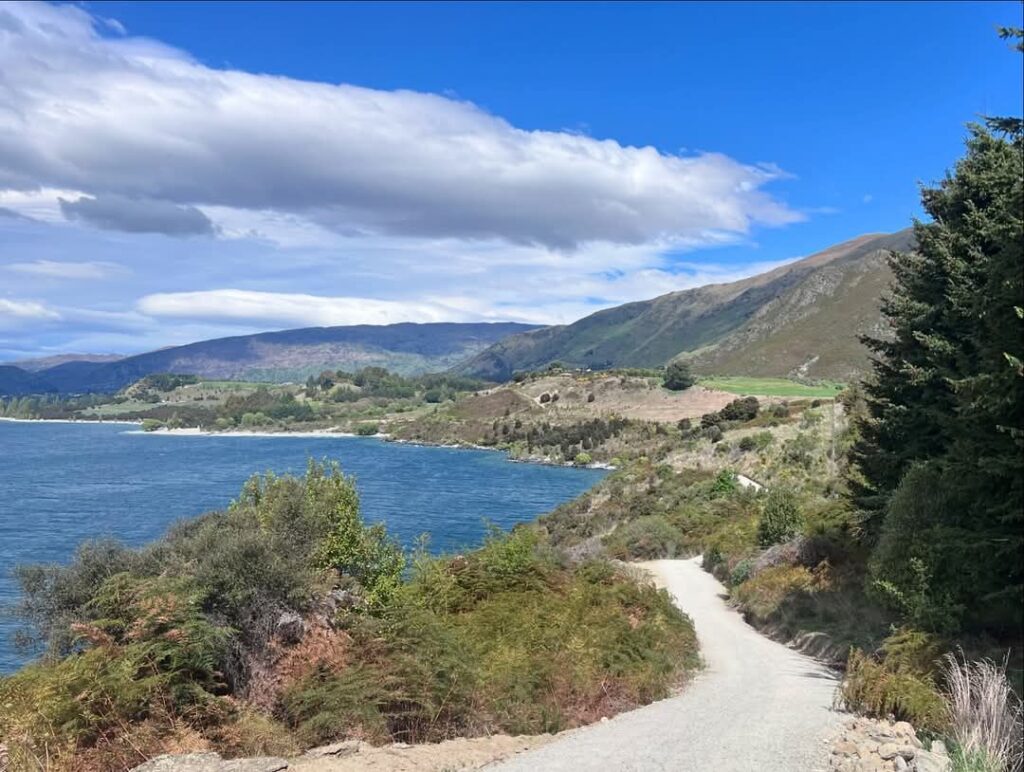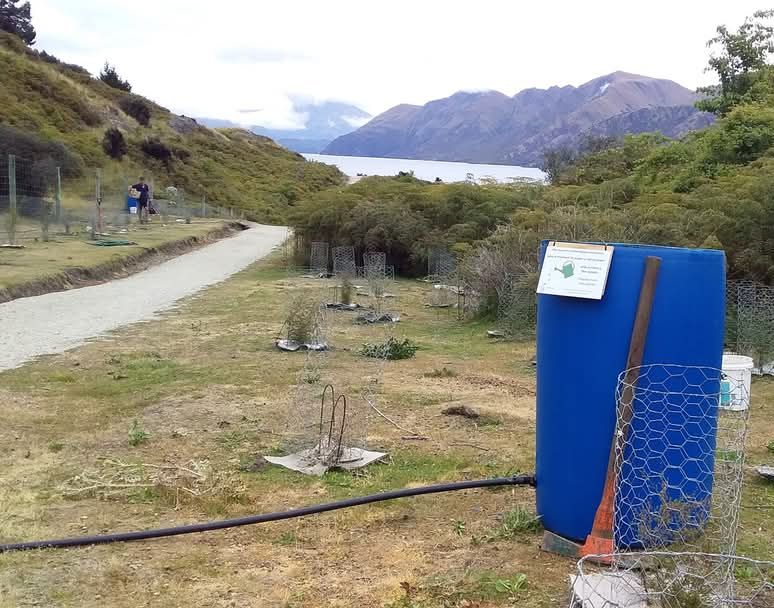Okay, I’m going to break my usual mold for a moment. You know, I don’t often talk about my personal life (you’re welcome), and I certainly don’t name-drop my travel destinations (you’re even more welcome). But today, I’m making an exception, and, well, please indulge me for one teensy second. I promise that my “humble bragging” does have a point…
I recently returned from a holiday in New Zealand, where I stayed in a smallish town called Wānaka, nestled among some of the most jaw-dropping scenery you’ve ever seen. But that’s not what this article is about. It’s about a delightful little project I came across while I was there, which inspired me so much, I couldn’t help but write about it.
Let me paint you a picture, and show you a few literal ones, too, courtesy of Te Kākano Aotearoa Trust. While hiking along a path by the local lake (unsurprisingly named Lake Wānaka), I stumbled (not literally, thankfully) upon a bright blue barrel. The sign on the barrel invited passersby to “Take a moment to water a native plant.” Next to the barrel was a white plastic bucket, and surrounding the barrel and bucket were newly planted native trees and shrubs, each lovingly protected by chicken wire or plastic sheaths. (Along with stunning landscapes and friendly locals, New Zealand boasts a healthy supply of hungry bunny rabbits.) Of course, I stopped and watered some plants, and while doing so, I became more and more intrigued about this project. As I hiked on, these blue barrel watering stations kept popping up every half-mile or so! Who put them there, and what was the backstory?
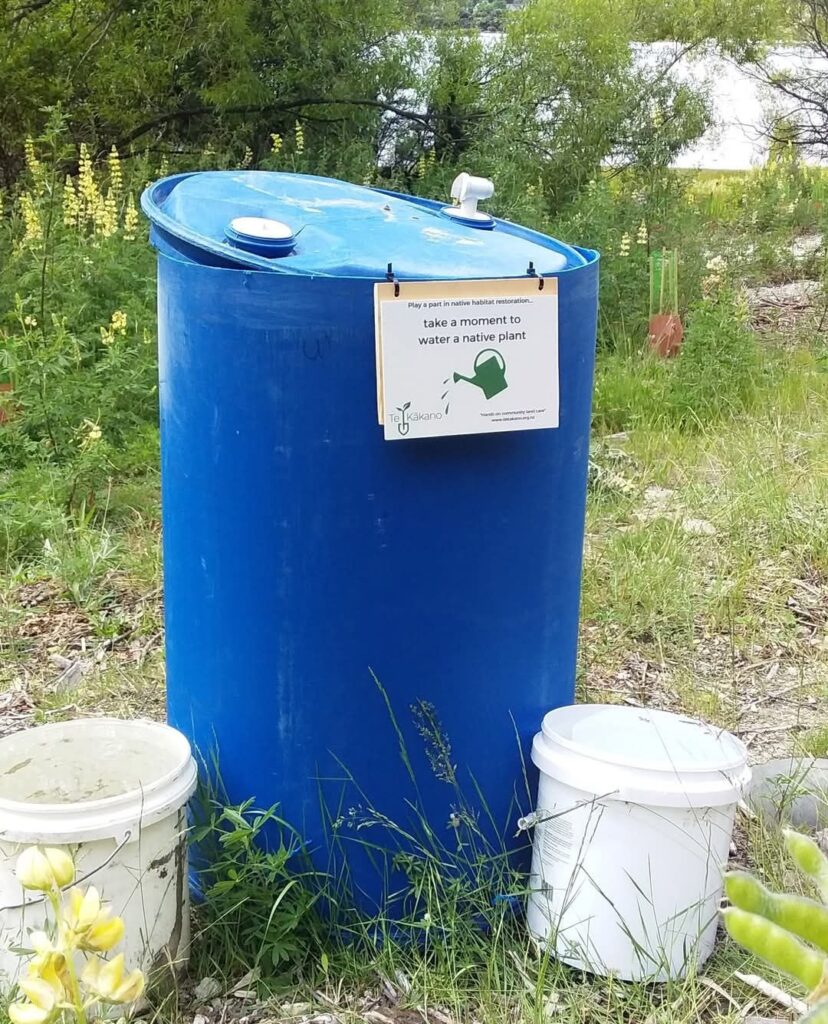
The trail I was exploring is known as the Millennium Track, a lovely path that stretches approximately 15 kilometers (that’s 9.3 miles—saved you the trouble) along the shores of Lake Wānaka. This well-maintained trail is simply amazing! It’s totally beloved by locals and visitors alike (me included), and it’s a great way to spend the day, especially if walking for 18.6 miles in an idyllic setting is your thing.
But what about these blue barrels?
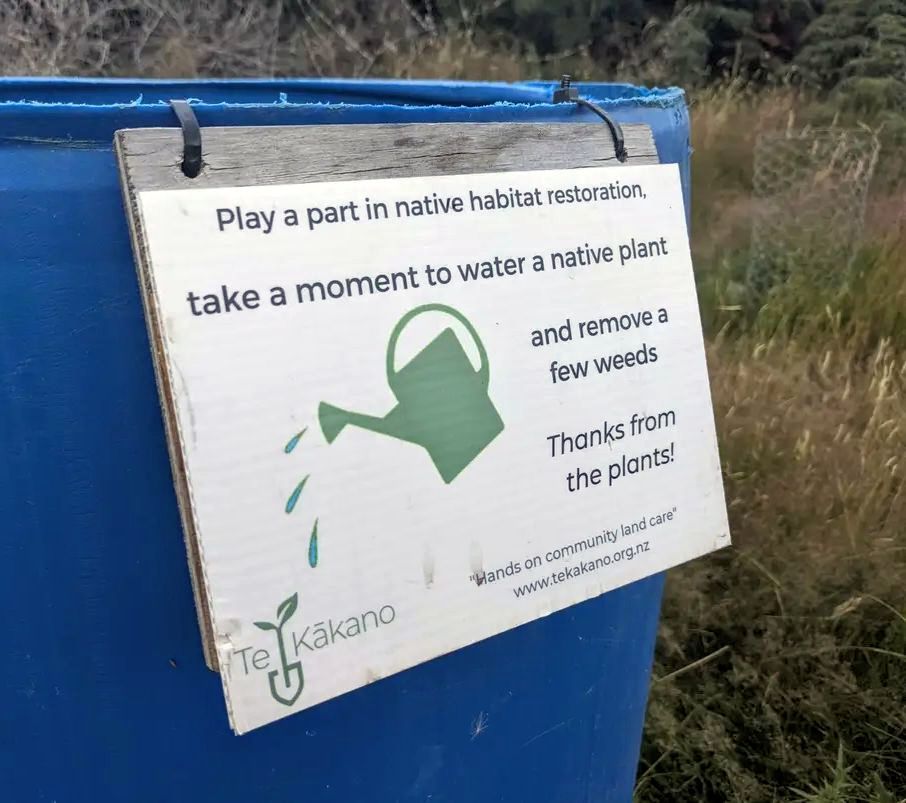
I wanted to learn more, so I found someone who was pulling weeds at one of the watering stations. A shy man who didn’t want to be photographed by a nosy tourist with an iPhone (can’t imagine why), he explained that he works for the Te Kākano Aotearoa Trust, a wonderful non-profit organization based in Wānaka. They specialize in eco-sourcing native plant seeds, nurturing them in their community-based native plant nursery, and facilitating community-led native habitat restoration projects. Their mission is to connect communities with their land through hands-on participation, education, and a shared passion for preserving New Zealand’s native flora. Check out this amazing organization: tekakano.org.nz
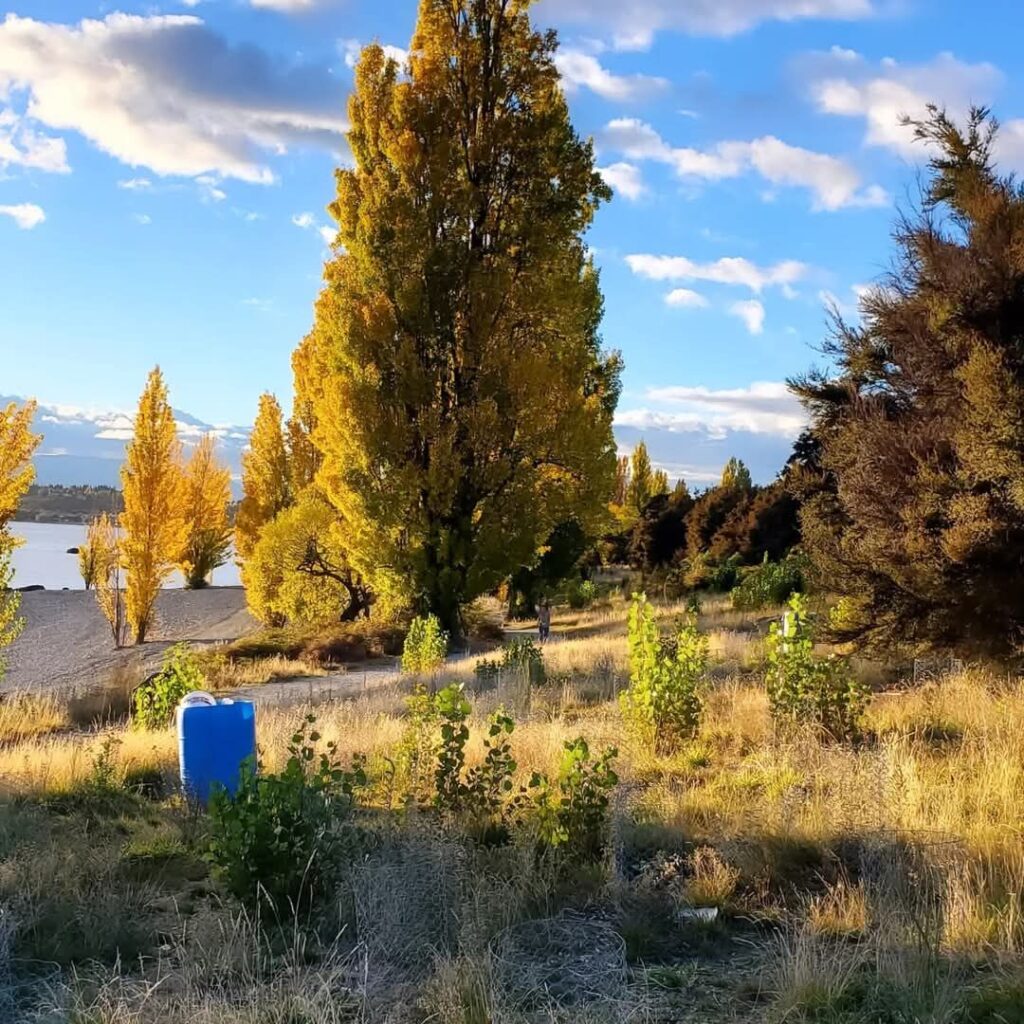
Simple, right? Yet so brilliant. By asking walkers, joggers, or even curious tourists like me to pause for just a few minutes to water a plant, the project achieves something magical. It creates a sense of connection. It’s not just about hydration for a young tree; it’s about humans bonding with their environment and feeling a tiny bit responsible for its well-being.
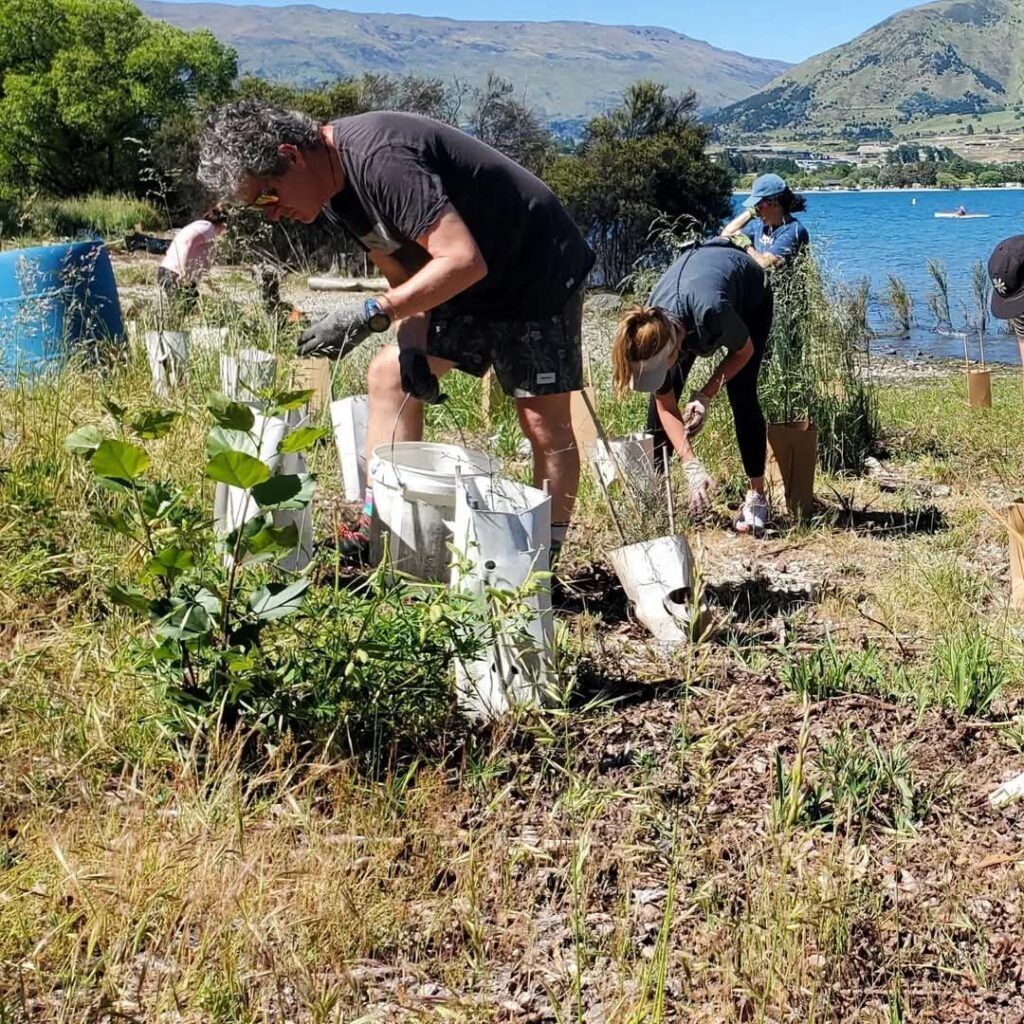
Now, let’s talk about the real impact of those spontaneous acts of kindness—like watering a thirsty plant during your walk. While each individual contribution might seem small and may not even dramatically reduce the workload or expenses of the restoration project, the true value lies in fostering community engagement. When people take a moment to care for their environment, they develop a personal connection to the land and a sense of shared responsibility. This collective involvement cultivates a community that values and actively participates in the stewardship of their natural surroundings, ensuring the long-term success and sustainability of projects like this one.
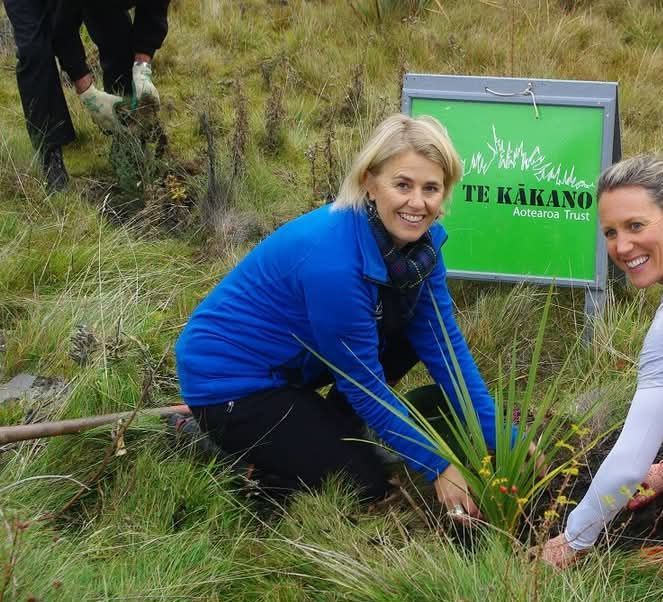
Why community involvement matters
Involving people in projects isn’t just a practical solution to limited resources; it’s a powerful way to foster attachment, care, and pride. When people contribute their time and effort—even in small ways—they’re more likely to value and protect what they’ve helped build.
Here’s why this works:
- It turns spectators into stakeholders. When you water a plant, pick up trash, or paint a mural, you’re no longer a bystander. You’re invested.
- It builds a sense of ownership. People are more likely to care for something they feel belongs to them.
- It strengthens community bonds. Working together on a shared goal creates connections among people, even strangers.
- It’s deeply satisfying. Helping out releases those feel-good endorphins that make us want to do even more good. (In psychologist’s terms, it’s self-reinforcing.)
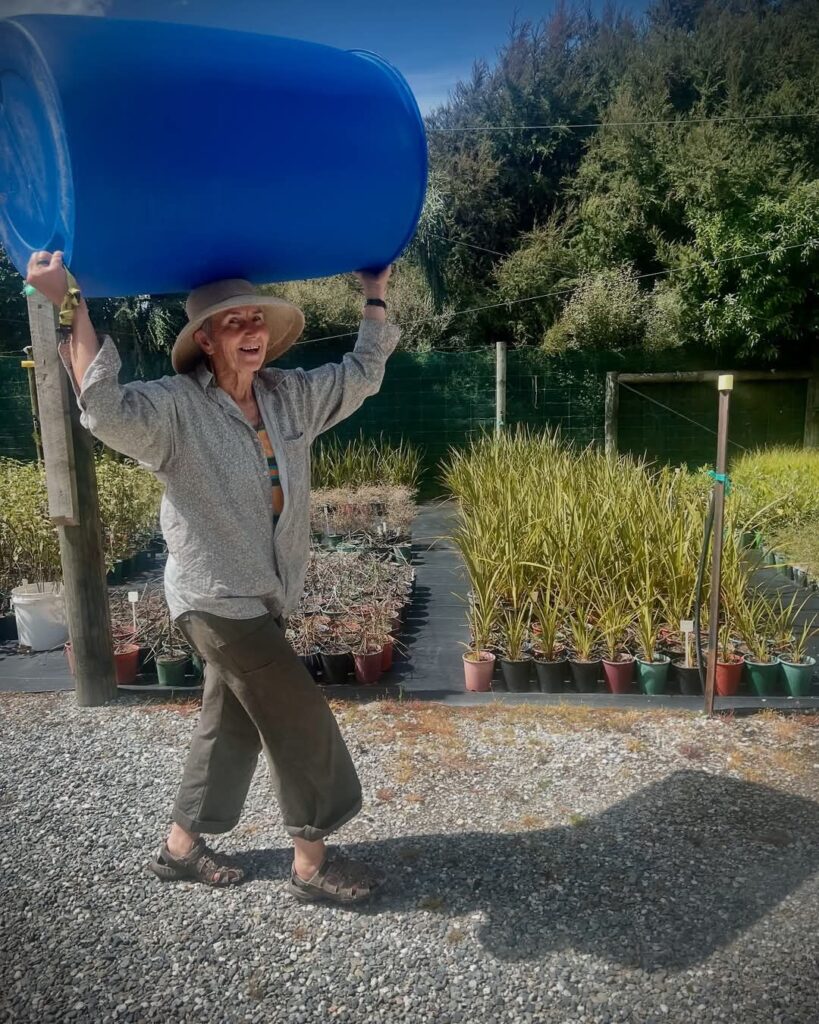
Why helping feels so good
Psychologists and sociologists have long studied the benefits of altruism, and the results are clear: helping others is a surefire way to boost your happiness. Here’s why:
- It reduces stress. Acts of kindness lower cortisol levels, our body’s stress hormone.
- It creates a sense of purpose. Contributing to something larger than yourself is deeply fulfilling.
- It builds community. Feeling connected to others is a key ingredient for happiness.
- It’s contagious. Seeing others help inspires more helping, creating a ripple effect of goodness.
Other inspiring projects around the world
While I’m completely smitten with Wānaka’s native plant project, it’s far from the only example of community involvement done right. Let’s take a look at some other programs that have inspired people to care for their environments and communities:
- Adopt-a-Highway programs (USA): Volunteers “adopt” a stretch of highway to keep clean, reducing litter while fostering pride in local landscapes.
- Berlin’s urban gardening movement (Germany): Vacant lots are transformed into thriving gardens where locals can plant vegetables, herbs, and flowers, creating green spaces in the heart of the city.
- The “Give a Plant a Drink” campaign (Australia): In Melbourne, public water stations encourage citizens to water street trees during hot summers, helping urban greenery thrive.
- Beach cleanups (Global): From Bali to California, organized cleanup events invite volunteers to remove trash, leaving beaches pristine while creating a sense of accomplishment. (I’ve volunteered on many beach cleanups in California—they’re not only rewarding, but they’re also downright fun!)
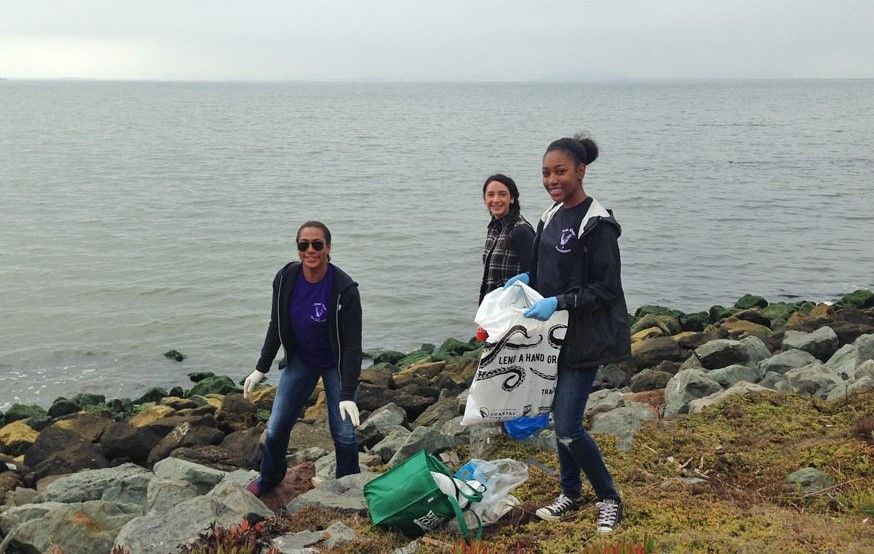
Altruism’s psychological and physical benefits
If you’ve been reading me for a while, you know that I am 100% science-based, and I don’t just run around saying things that I can’t back up. So, let’s check out some recent research on this topic…
The link between altruistic actions and well-being is supported by a wealth of research studies. Helping others doesn’t just make us feel good—it literally improves our mental and physical health. Below are a few recent studies illustrating the science behind the feel-good effects of helping.
- Altruism and reduced stress
A 2022 study published in Frontiers in Psychology examined how volunteering affects cortisol levels. Researchers found that individuals who volunteered regularly had significantly lower cortisol (that’s one of the major stress hormones) levels compared to non-volunteers. The study highlighted that altruistic activities provided emotional regulation benefits, even during high-stress periods like during the COVID-19 pandemic. - Helping others creates meaning
A 2021 study in the Journal of Positive Psychology investigated the relationship between prosocial behavior (meaning, helping others) and a sense of purpose. Results showed that engaging in altruistic acts heightened feelings of meaning and reduced symptoms of depression, especially among older adults. - Boosting happiness through random acts of kindness
A 2020 study in Psychological Science looked at the “helper’s high” phenomenon by studying participants who performed daily acts of kindness. The findings revealed that individuals who engaged in small, consistent prosocial acts experienced sustained increases in happiness, largely because these acts enhanced their sense of social connection. - Physical health and volunteering
A 2019 study in Social Science & Medicine followed over 12,000 participants in a long-term health study. It found that those who volunteered for community-based projects had lower rates of hypertension and cardiovascular disease compared to non-volunteers. The researchers attributed these benefits to reduced loneliness and increased physical activity during the volunteering process. - Neuroscience of altruism
In 2021, a groundbreaking study in Nature Neuroscience demonstrated that altruism activates the brain’s reward systems, particularly the ventral striatum (don’t worry if you’ve never heard of it—you do have one and it’s super cool and very useful). Participants who gave money to charitable causes showed heightened neural activity in regions linked to pleasure, indicating that helping others is neurologically rewarding.
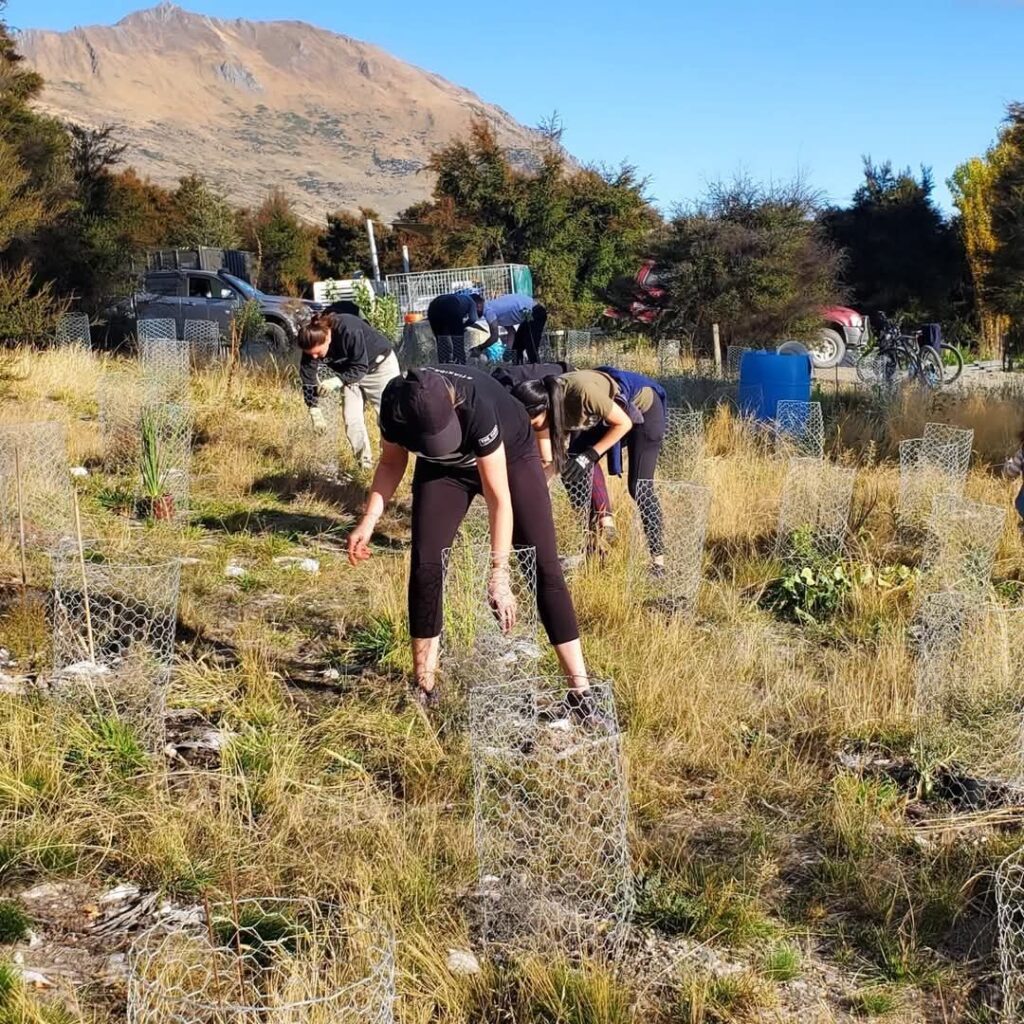
How to start or get involved
You might be wondering, “How can I bring this magic to my own community?” Great question. Whether you want to start a project or join an existing one, here are some ideas:
Starting your own project
- Find a need: Look around your community. Is there a park that needs cleaning? A garden that could use a few extra hands? A school playground in need of repainting?
- Make it easy: Simplicity is key. Provide clear instructions and accessible tools, like the bucket and barrel system in Wānaka.
- Engage local groups: Partner with schools, places of worship, or businesses to amplify your reach.
- Spread the word: Use social media, flyers, or word-of-mouth to invite people to participate. (Helpful hint: it won’t hurt to make it sound like fun!)
Joining an existing program
- Search online: Look for community groups or events near you. Apps like Meetup often list volunteer opportunities.
- Ask around: Your local library, community center, or even a friendly neighbor might know about ongoing projects.
- Bring a friend: Volunteering is even more rewarding when shared with someone you care about.
- Stay consistent: Regular participation helps you feel more connected to the cause and the people involved. (Plus, it helps the volunteer coordinators with their jobs: they know whom they can depend on.)
Final thoughts
My holiday in New Zealand didn’t just fill my photo library with breathtaking shots; it filled my heart with inspiration. Seeing a simple, effective project like the one in Wānaka reminded me how powerful community involvement can be. It’s not just about getting tasks done; it’s about building connections—to the land, to our neighbors, and to ourselves.
So, what are you waiting for? Whether you’re starting a new project, joining an existing one, or simply taking a moment to water a native plant on your next walk, know this: every small act of care adds up to something beautiful!
